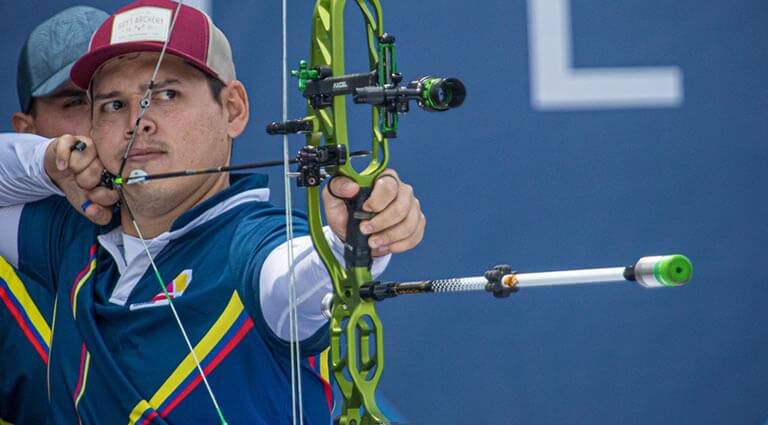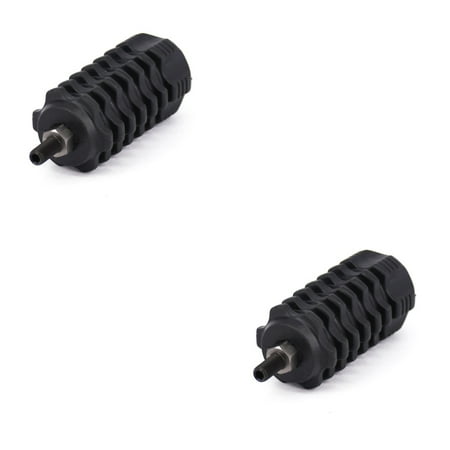Why Bow Stabilizers Matter: Enhance Your Shooting Accuracy Today!
Wiki Article
Maximize Your Archery Precision With These Bow Stabilizer Techniques
One essential component that can substantially impact your performance is the appropriate utilization of bow stabilizers. Whether you are a skilled archer looking to fine-tune your abilities or a newcomer anxious to boost your accuracy, grasping these bow stabilizer techniques might be the trick to striking your mark with unmatched uniformity.Benefits of Making Use Of Bow Stabilizers
Making use of bow stabilizers can considerably improve an archer's accuracy and total performance by decreasing bow torque and resonance. Bow torque, triggered by the unequal distribution of weight in the bow, can result in inconsistencies in shot positioning. By attaching a bow stabilizer, the weight is rearranged, reducing the results of torque and helping the archer accomplish a much more consistent shot. Additionally, bow stabilizers moisten resonance, which not just enhances the comfort of shooting but likewise protects against the bow from jumping upon release, hence helping in preserving appropriate goal.Furthermore, bow stabilizers can assist in holding the bow stable, particularly during gusty conditions or when shooting from longer ranges. The added weight at the front of the bow provides stability and equilibrium, permitting the archer to concentrate on intending without the disturbance of bow motion. On the whole, the benefits of utilizing bow stabilizers prolong past just accuracy, enhancing the archer's experience and performance in various shooting situations.
Choosing the Right Bow Stabilizer
Selecting the proper bow stabilizer is important for optimizing your archery devices and boosting shooting efficiency. Much heavier stabilizers can assist lower bow torque and soak up more vibration, leading to a steadier objective.
Finally, take into consideration the style of the stabilizer. Some stabilizers come with flexible weights or dampeners that permit you to customize the equilibrium and feeling of your bow. Ultimately, picking the right bow stabilizer involves discovering a balance between weight, length, product, and layout to improve your capturing accuracy and total performance.
Proper Installment Methods
To make sure optimum performance and safety and security in archery, grasping appropriate installation methods for your bow stabilizer is crucial. The primary step in installing a bow stabilizer is to recognize the correct placement on your bow. Many stabilizers are connected to the front of the riser, below the grasp, to aid counterbalance the weight of devices such as sights and quivers. Make certain that the stabilizer is not interfering with various other components or hindering your capturing type.Following, securely affix the stabilizer to the bow utilizing the ideal placing hardware. Some stabilizers come with flexible weights that can be added or gotten rid of to make improvements the equilibrium of your site here bow.

Changing Stabilizer Weight and Size
After making certain the appropriate installation of your bow stabilizer, the following step includes changing the weight and size to optimize its performance in boosting archery accuracy. The weight of the stabilizer plays a vital duty in lessening bow activity throughout the shot cycle.When it pertains to stabilizer size, discovering the ideal equilibrium is vital. A longer stabilizer can give better security by raising the range between the bow and the weight at the end of the stabilizer. This included range improves the supporting result, specifically in gusty conditions or when contending longer ranges. Alternatively, a shorter stabilizer offers a lot more ability to move and may be preferred by archers that value dexterity and quick activities during shooting.
Advanced Stabilizer Tuning Tips
Accomplishing optimal bow stability and precision in archery requires a nuanced strategy to advanced stabilizer tuning. Advanced stabilizer adjusting entails fine-tuning different parts to improve the bow's equilibrium, decrease resonance, and boost total accuracy.One more critical facet of innovative stabilizer adjusting is maximizing the damping residential properties of the stabilizer system. Exploring various materials for the stabilizer building and construction, such as carbon fiber or aluminum, can likewise influence the bow's efficiency by altering its weight circulation and tightness.
Final Thought
Finally, making the most of archery precision can be accomplished through the correct option, setup, and change of bow stabilizers. By recognizing the advantages of utilizing stabilizers, choosing the right one, and fine-tuning its weight and size, archers can enhance their capturing accuracy. Employing sophisticated tuning techniques can even more enhance stability and uniformity in arrowhead index flight. Overall, integrating bow stabilizers into archery technique can lead to enhanced efficiency and enhanced accuracy.Using bow stabilizers can significantly enhance an archer's precision and overall performance by minimizing bow torque and vibration. Longer stabilizers offer greater security and balance, especially for long-distance shooting, while much shorter stabilizers use even more versatility and are easier to steer in tight areas (bow stabilizer). Carbon fiber stabilizers are resilient and lightweight, while light weight aluminum stabilizers are robust and give outstanding vibration dampening
A longer stabilizer can offer higher stability by raising the range between the bow and my review here the weight at the end of the stabilizer.Another vital aspect of advanced stabilizer adjusting is optimizing the damping residential properties of the stabilizer system.
Report this wiki page